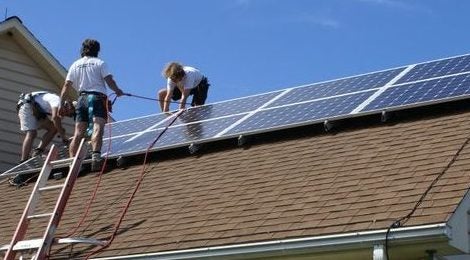Keystone State looks to grow local solar by closing SREC market

The relationship between Pennsylvanians and energy runs deep. From coal to shale gas to nuclear to renewables, energy has long been a backbone of the state’s economy. In recent years, renewables – solar, in particular – have gained footing as an important new energy source for the state. A new law, passed last month, aims to keep the benefits of solar within the state.
Pennsylvania passed the Alternative Energy Portfolio Standard (AEPS) in 2004. This created clean energy procurement targets for the state. Among them was the target for solar electricity generation, 0.5% by 2021. To meet the target, Pennsylvania’s electric utilities can either build their own solar arrays or purchase clean energy credits from other solar owners. This includes solar homeowners.
When a homeowner installs solar, his or her panels generate clean solar electricity by the kilowatt-hour. For every 1,000 kilowatt-hours of electricity the panels produce, the owner gets a Solar Renewable Energy Credit (SREC). An SREC signifies the green value of that electricity. Pennsylvania utilities can purchase those SRECs to comply with the state’s solar energy targets. SRECs carry a monetary value; so, homeowners can choose to sell their SRECs and use that SREC income to help pay off their solar array.
The AEPS did not restrict the purchase of SRECs to energy sources in Pennsylvania. HB116, passed in October will close Pennsylvania’s borders to out-of-state SRECs
The monetary value of SRECs is a factor of supply and demand: how many SRECs the utilities need to purchase (for AEPS compliance) and how many SRECs are available for purchase. Up until now, Pennsylvania’s AEPS has allowed utilities to buy SRECs from solar arrays located outside the state. That’s meant that solar homeowners throughout the Mid-Atlantic have been able to sell their SRECs into the Pennsylvania market. This has led to an oversupply of SRECs, lowering their value. For years, solar owners from as far away as Virginia have sold their credits into Pennsylvania. The value of SRECs in Pennsylvania has remained low, currently trading at $4 per credit. By comparison, the price for an SREC in D.C.’s closed market is more than $400. A typical 5 kW residential solar array will generate six SRECs per year.
Solar supporters and consumer advocates alike have long challenged the ability of out-of-state SRECs to be sold into Pennsylvania. The flooded market has kept SREC values low, undermining the ability of Pennsylvanians to meaningfully apply their SREC income to their solar costs. Critics have been quick to point out that the allowance of out-of-state SRECs in Pennsylvania supports solar everywhere but Pennsylvania itself.
Under HB 116, Pennsylvania’s electric utilities will only be able to purchase SRECs from solar arrays located within the state. With the bill, the Pennsylvania legislature has sent a signal to solar owners and advocates: let’s meet our clean energy targets with solar energy produced in our own state, by our own workers, for our own residents.
While the Pennsylvania Public Utilities Commission (PUC) will have some leeway in how it interprets the technical language of the bill, many solar experts in the state agree that existing out-of-state SREC contracts will not be grandfathered in under the new law. While initial modeling efforts do not project SREC values rising to their original $300 value, advocates agree that the new law will lead to some value increase for SRECs in the state.
